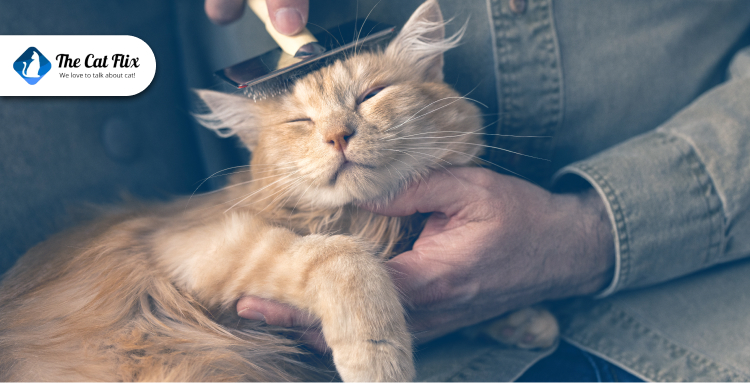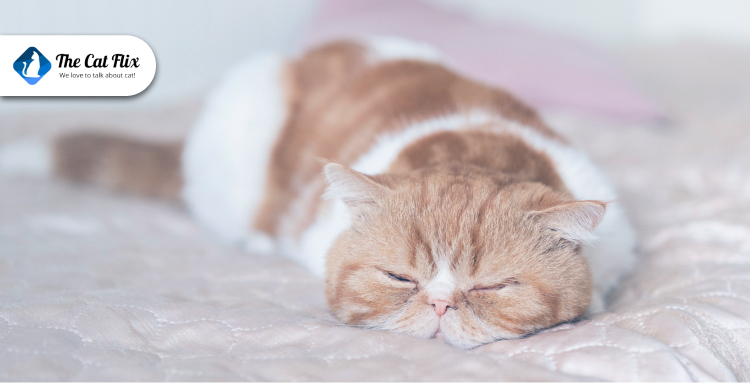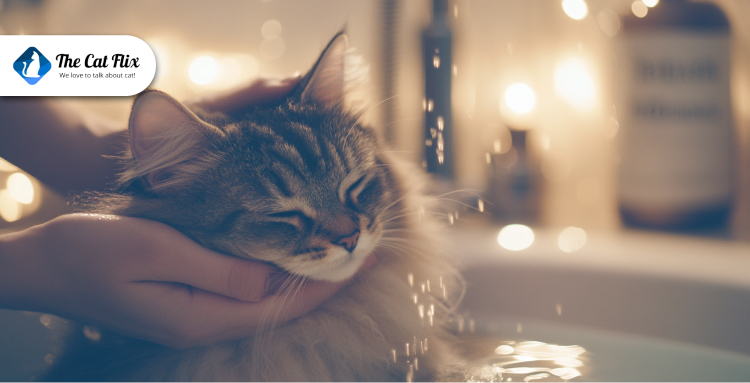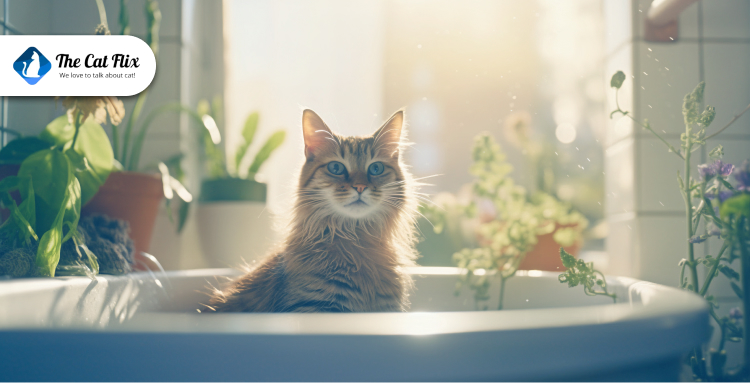Did you know that a cat’s tongue is covered in tiny, backward-facing barbs that act like a built-in hairbrush? These little spines help them stay clean by removing dirt, loose fur, and even allergens. While short-haired cats often don’t need baths, long-haired cats require extra care. Their thick coats can trap dirt, oils, and tangles, making occasional baths necessary.
But here’s the catch—too many baths can dry out their skin, while waiting too long can lead to mats. So, how often should you bathe your long-haired cat? Let’s break it down and make bath time easier for both of you.
How Often Should You Bathe Your Cat?
The “Every 4–6 Weeks” Rule
For most long-haired cats, a bath every 4 to 6 weeks does the trick. Their thick coats can trap oil, dirt, and even odors that a simple brush can’t always fix. But here’s the thing—not every fluffy feline follows the same schedule. Some cats stay fresh longer, while others seem to get messy way too fast.
So, how do you know if your cat needs more (or fewer) baths? It all depends on their coat type, lifestyle, and health. Let’s break it down.
- Mat-Prone Fur: If your cat’s coat tangles easily, they might need more frequent baths to prevent painful matting. Even with daily brushing, some long-haired cats—like Persians or Maine Coons—can develop knots that water and shampoo help loosen.
- Indoor vs. Outdoor Life: Where your cat spends most of their time makes a big difference. Outdoor cats pick up dirt, pollen, and who-knows-what from their adventures, meaning they need baths more often than a pampered indoor cat. On the flip side, if your cat never steps outside, you can probably go longer between washes.
- Health and Skin Issues: Some cats have allergies, dandruff, or sensitive skin that require special care. If your cat suffers from skin conditions, your vet may recommend medicated baths on a set schedule. Other conditions, like excessive oil buildup, might also mean more frequent washing. (Also read: How to Manage Seasonal Allergies in Cats)
- Activity Level: A super playful, adventurous cat is more likely to roll around in dust, food, or other messes compared to a lazy lap cat that lounges all day. If your cat loves to explore every corner of the house (or the backyard), they’ll probably need baths more often.
- Grooming Abilities: Some cats struggle to clean themselves properly. Older cats, overweight cats, or those with mobility issues may have trouble reaching certain areas, leading to buildup of dirt and oil. Occasional baths help keep them clean and comfortable.
How to Tell It’s Time for a Bath
Not sure if your cat actually needs a bath right now? Here are some clear signs it’s time to fill the tub:
- Their fur looks greasy or feels sticky.
- They have a strong odor that doesn’t go away after brushing.
- You see visible dirt or stains on their coat.
- Their fur is matted or tangled, and brushing alone isn’t fixing it.
- They’ve had a messy accident (think litter box mishap or food spill).
If you notice any of these, it’s probably bath time. The key is to watch your cat’s coat and adjust their bathing schedule based on their needs. No two cats are exactly alike, so it’s all about finding the right balance.
What You Need Before Bathing Your Cat (So You Both Survive It)

Let’s be honest—bathing a cat isn’t something most of us look forward to. Cats and water don’t exactly mix, and if you’re not prepared, bath time can turn into a messy, stressful experience (for both of you). But with the right setup and approach, you can make the process smoother, faster, and way less chaotic.
-
Must-have Bathing supplies
Before you even think about turning on the water, gather everything you need. You don’t want to be fumbling for a towel or shampoo while your dripping-wet cat makes a run for it.
- First, make sure you have a cat-safe shampoo—never use human shampoo, as it can dry out their skin. If your cat has allergies or dandruff, check with your vet for a medicated option. (Also read: 10 Best Antifungal Shampoo For Cats)
- You’ll also need a cup or handheld sprayer for rinsing since dunking your cat in water isn’t an option.
- A slip-proof mat (or even a folded towel) inside the sink or tub can help your cat feel more secure. And don’t forget soft, absorbent towels—one for drying and another for wrapping them up afterward.
- Having a brush or comb handy will also help, as pre-bath brushing prevents tangles from turning into stubborn mats. Lastly, have treats ready to reward your cat afterward—because let’s face it, they’ll deserve it.
-
Setting up a stress-free bath area
Creating a calm, comfortable bath space can make a huge difference. Choose a small, enclosed area like a bathroom or kitchen sink for kittens and smaller cats, or a bathtub if your cat is larger.
Close the door before you start—because if they escape mid-bath, you don’t want them running through the house soaking wet. Turn off any loud noises, like fans or music, to keep the atmosphere as calm as possible.
-
Pre-Bath Brushing
One of the best things you can do before a bath is to give your cat a good brushing. This step is often overlooked, but it makes a world of difference. Water can actually make tangles worse, so if your cat’s fur is already knotted, a bath will only turn those tangles into stubborn mats that are painful to remove.
Using a wide-tooth comb or slicker brush, gently go through their fur and remove any loose hair, dirt, or knots. Pay special attention to areas that mat easily, like behind the ears, under the legs, and along the belly. If you find tough mats, try working them out before the bath using a detangling spray made for cats.
Step-by-Step: How to Give Your Cat a Bath Without Chaos

So, you’ve gathered all your supplies, set up a stress-free bath area, and brushed out any tangles. Now comes the real challenge—actually getting your cat wet without turning your bathroom into a disaster zone. The key is to stay calm, move slowly, and work efficiently. Here’s how to get through it step by step.
-
Water Temperature
Cats are picky about everything, including water temperature. If the water is too hot, it can scare them (or even burn their sensitive skin). Too cold? They’ll panic and try to escape. The sweet spot is lukewarm water—about the same temperature you’d use for a baby’s bath. Test it with your wrist before starting. If it feels warm but not hot, you’re good to go.
-
Wet Down the Coat
Most cats hate being submerged in water, so don’t dunk them. Instead, use a cup or a handheld sprayer to gently wet their fur. Start from the shoulders and work your way down to the tail. Keep the water away from their face—cats really don’t like water near their eyes, ears, or nose. If your cat gets nervous, speak to them in a calm voice and take short breaks if needed. The goal is to get them thoroughly wet, but without rushing and making them panic.
-
Lather and Rinse Shampoo Properly
Once your cat is wet, apply a small amount of cat-friendly shampoo (never use human shampoo—it’s too harsh for their skin). Start at their neck and gently massage the shampoo into their fur, working it through to the tail. If your cat has especially dirty spots—like their paws or rear end—focus a little extra attention there.
Now, rinsing is where most people go wrong. If you don’t rinse properly, leftover shampoo can cause irritation and itching. Use clean, lukewarm water and pour it gently over their fur until the shampoo is completely gone. It might take a few rounds, so be patient. If your cat starts squirming, give them a quick break before finishing up.
-
Cat-Safe Conditioning
Some long-haired cats benefit from a leave-in or rinse-out conditioner, especially if their fur tangles easily. If you’re using one, apply it the same way as the shampoo—gently work it in, then rinse thoroughly. Not all cats need conditioner, so if your cat’s fur stays soft and manageable without it, feel free to skip this step.
-
Towel vs. Blow-Dry
Once your cat is clean, wrap them in a soft towel immediately to soak up as much water as possible. Gently pat them dry rather than rubbing, since rough drying can cause tangles in long-haired fur. If your cat tolerates it, switch to a second dry towel once the first one gets too damp.
Now, what about blow-drying? Some cats absolutely hate it, while others don’t mind as long as you use a low heat setting. If your cat is okay with it, hold the dryer a few inches away and keep it on the lowest heat and noise setting.
Never aim hot air directly at their face, and always keep one hand on their fur to make sure it’s not getting too warm. If your cat freaks out at the sound of a hairdryer, just stick to towel-drying and let them air-dry in a warm, draft-free room.
What to Do After the Bath (Because Your Cat Will Judge You)

So, you’ve survived the bath—congrats. But hold up, the work isn’t over yet. Now comes the important part: making sure your cat feels comfortable, calm, and, most importantly, not mad at you. Here’s what to do after the bath to keep things as smooth as possible.
-
Post-Bath Brush-Out
Once your cat is mostly dry, grab that brush and do another quick post-bath brush-out. Wet fur is more prone to tangling, so this step will help prevent any mats from forming as it dries. Brush gently but thoroughly, paying extra attention to the areas that tend to mat, like the belly, underarms, and behind the ears. If your cat’s fur is still damp, using a wide-tooth comb can help detangle any knots without pulling too hard. This will also help keep their coat smooth and soft as it dries, making them feel a little less like you’ve just drowned them in the tub.
-
Look For Skin Irritation or Stress
After a bath, always check your cat’s skin for any signs of irritation. Redness, bumps, or dry patches can indicate that something went wrong—maybe the shampoo didn’t agree with their skin or the water was too hot. If you notice anything concerning, it’s a good idea to follow up with your vet to get advice on how to care for their skin.
Also, watch for signs of stress after the bath. Cats can get a little freaked out after water exposure, especially if they’re not used to it. Look for panting, hiding, or even excessive grooming. If your cat seems more stressed than usual, give them space and time to calm down. Sometimes, just letting them chill in a cozy spot will help them feel safe again.
-
Reward Time
Now, for the most important step of all—treat time. After surviving the bath (and letting them know it wasn’t a punishment), give your cat a special treat or two to let them know they did a good job. If your cat has a favorite toy or a comfy spot they love, make sure they have access to that, too. The goal is to associate bath time with something positive so that they aren’t terrified the next time it comes around.
Final Thoughts: A Happy Cat Means a Happy You
Bath time with your cat doesn’t have to be a nightmare. With the right tools, a calm approach, and a little patience, you can get your fluffy friend squeaky clean without the stress (for both of you!). Whether your cat is an outdoor adventurer or a lap-loving couch potato, keeping their fur clean and healthy is part of being a responsible pet parent. And when your cat looks good, feels good, and is happy again, you’ll feel pretty great too.
So, what’s your cat’s bath experience like? Do you have any tips for making bath time smoother? Share your thoughts in the comments below, and don’t forget to share this post with other cat owners who might find it helpful.

